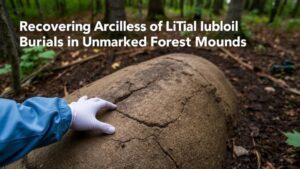Detecting in Areas With Known Land Subsidence for Artifacts Brought to the Surface
Detecting in Areas With Known Land Subsidence for Artifacts Brought to the Surface
Detecting artifacts in areas with known land subsidence is a complex yet vital process for archaeologists and conservationists. Land subsidence can expose artifacts that have been buried for centuries, but it also poses challenges in locating and preserving these items. This article explores methods and considerations for detecting artifacts in subsided areas while incorporating relevant case studies and statistical data to provide a deeper understanding of the topic.
Understanding Land Subsidence
Land subsidence refers to the gradual sinking of the Earth’s surface due to a variety of factors, including groundwater extraction, mining activities, and natural geological processes. According to the United States Geological Survey (USGS), approximately 80% of subsidence in the United States is caused by groundwater extraction. This phenomenon can significantly affect the stability of archaeological sites, revealing artifacts that were once deep within the ground.
Impacts of Land Subsidence on Archaeology
The emergence of artifacts due to subsidence can provide unique opportunities for archaeological research; however, it also carries its own set of challenges. Key impacts include:
- Artifact Exposure: As the land sinks, artifacts previously hidden may be exposed on the surface, creating potential for discovery.
- Site Disturbance: Natural and human-induced disturbances can compromise the integrity of archaeological contexts, leading to fragmentation of artifacts.
- Intrusive Weathering: Exposed artifacts may face erosion or degradation from environmental conditions if not promptly secured.
Methods of Detection
In areas of known land subsidence, detecting artifacts can leverage a variety of techniques. Each method has its advantages and situational applications:
- Geophysical Surveys: Non-invasive techniques such as ground-penetrating radar (GPR) and electrical resistivity can help locate buried artifacts before physical excavation. GPR can detect anomalies that may indicate the presence of artifacts, while electrical resistivity mapping can give insights into subsurface conditions.
- Visual Inspection: In areas where subsidence has brought artifacts to the surface, systematic visual inspections can be employed. Archaeologists may conduct surface surveys to document newly exposed items.
- Dirt Sample Analysis: Soil analysis can reveal organic material suggesting human activity in subsided areas, providing clues about potential artifact locations.
Case Studies
Several notable case studies illustrate the effective detection of artifacts in regions impacted by subsidence:
The Netherlands
The Dutch landscape is riddled with water and soil management challenges, resulting in significant land subsidence. Archaeologists have utilized GPR technology extensively to locate submerged artifacts from medieval times, revealing critical information about past human settlements.
New Orleans, Louisiana
In the post-Hurricane Katrina landscape, significant areas of New Orleans experienced subsidence that exposed many historically significant artifacts. Archaeologists undertook large-scale surveys using a combination of visual inspections and geophysical methods, leading to the discovery of artifacts pertaining to the city’s French colonial history.
Challenges and Considerations
While detecting artifacts in subside-prone areas is a valuable endeavor, professionals must navigate several challenges. Some key considerations include:
- Legal Restrictions: In some regions, legal permissions are required before conducting surveys or excavations, particularly in historic districts.
- Environmental Impacts: The extraction of groundwater and other subsidence-related activities can have environmental impacts that must be evaluated in conjunction with archaeological work.
- Community Engagement: Involving local communities is crucial for understanding the historical significance of the artifacts and fostering a collaborative preservation effort.
Actionable Takeaways
For archaeologists and researchers involved in detecting artifacts in areas of known land subsidence, several actionable takeaways emerge:
- Conduct thorough assessments of subsided areas using multiple detection methods to increase artifact recovery potential.
- Engage with local communities and stakeholders for permission and support in archaeological efforts.
- Use technology-driven approaches to minimize environmental disruption while maximizing archaeological yield.
To wrap up, while land subsidence presents both opportunities and challenges for artifact detection, applying a multifaceted approach can lead to valuable discoveries and a better understanding of historical contexts. Through technological advancements and proactive community involvement, the field can navigate the complexities of subsidence effectively.

